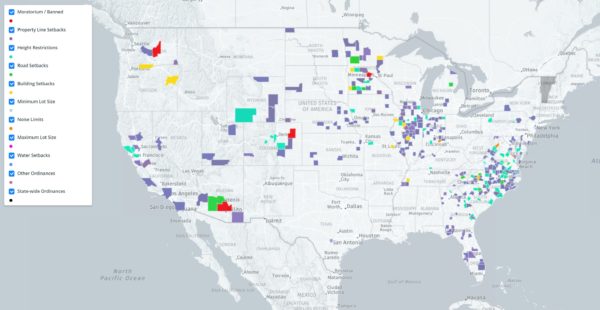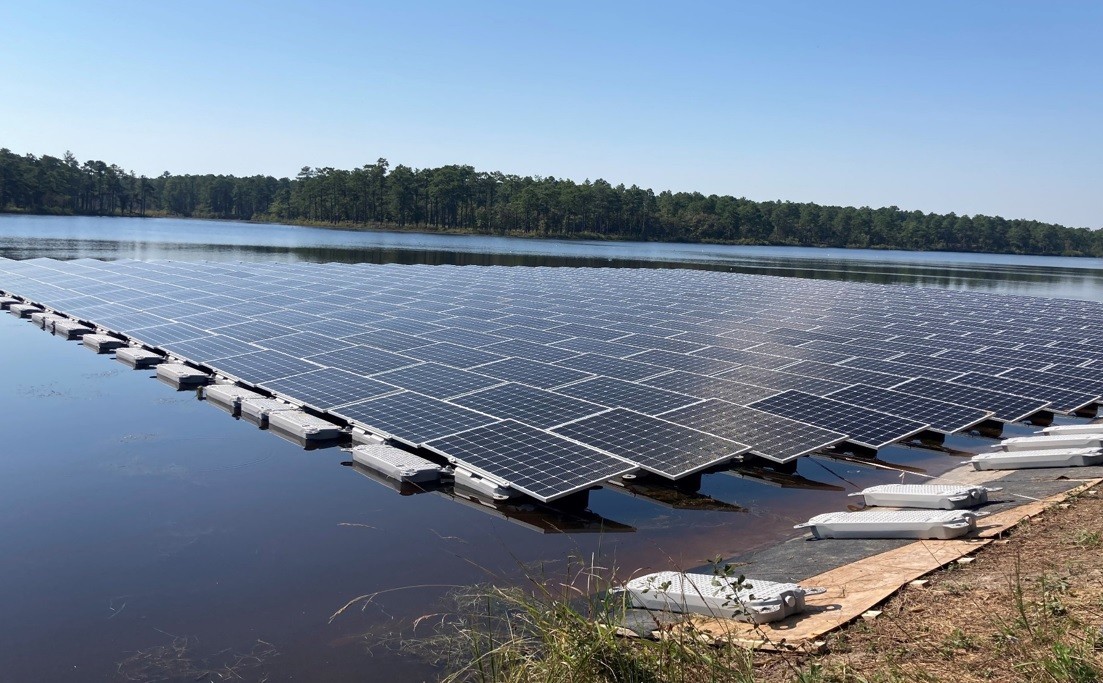The U.S. Department of Energy’s National Renewable Energy Laboratory (NREL) has released a database of 838 solar ordinances from across the United States. The ordinances were collected after a “locality-by-locality review [of] zoning ordinances after completing an initial review of scholarly legal articles”. Afterwards, the collection of ordinances was put in a machine readable format that can be downloaded from NREL’s website.
The group also released an interactive map to allow individuals to browse the jurisdictions within their database. The legend tells viewers what information they can expect in the data for each jurisdiction.

The data contains information from 34 states. Four of the states – North Carolina, Illinois, Indiana, and Virginia – represent 48% of the entries. North Carolina makes up 135 of the total data points collected.
The majority of this data covers setbacks from property lines, rivers, roads, and highways. Other ordinances in the data are related to the volume of area covered by the solar modules (the ground coverage ratio – also known as GCR), the height of solar panels, noise produced by the system, and restrictions to the total system size. Notably, the data also references several moratoriums, and two outright bans. Some of the ordinances covered are at the city level, and a couple are at the state level, but the majority of the jurisdictions covered are at the county level.
One of the document’s goals is to assist researchers as they model the reality of what volumes of solar can be deployed across the nation, adding the local political climate to previous, simpler modeling that looked solely at the amount of available land.
The spreadsheet’s data is designed so that researchers can feed it into their models and produce more precise estimates of the amount of solar that can be deployed within the specific jurisdictions.
Broadly speaking, there is plenty of space for solar power to meet our needs. It has long been known that we could fully power the United States with a 100 km by 100 km square of solar panels in the southwest deserts of the USA. But since that solution isn’t especially practical, it’s worth noting that many analyses revealed how we can meet 100% of our electricity needs via rooftops, floating solar, windows, and parking lots.
However, there is significant pushback against solar in many areas – specifically in rural regions, mostly due to political reasons. Unfortunately, many politicians have already jumped on this anti-solar bandwagon.
This content is protected by copyright and may not be reused. If you want to cooperate with us and would like to reuse some of our content, please contact: editors@pv-magazine.com.








Well, when so many of our politician’s campaigns are funded by the elements of the fossil fuel industry, what do you expect?
To call it political that people are against it is simply reckless, ignorant and lazy reporting! I have an Industrial Scale solar complex moving in next door. They had planned on wrapping my 3 acre home on 3 sides with panels – that has changed. Adjacent homes lose up to 30% in value when these “solar farms” move in next door. I can direct you to the studies online. So it is NOT political that rural people do not want these industrial complexes near them and I think you know that. It wrecks our homes and neighborhoods! Do you want a tire factory moving into your neighborhood??
Show me where there is a 30% home price drop